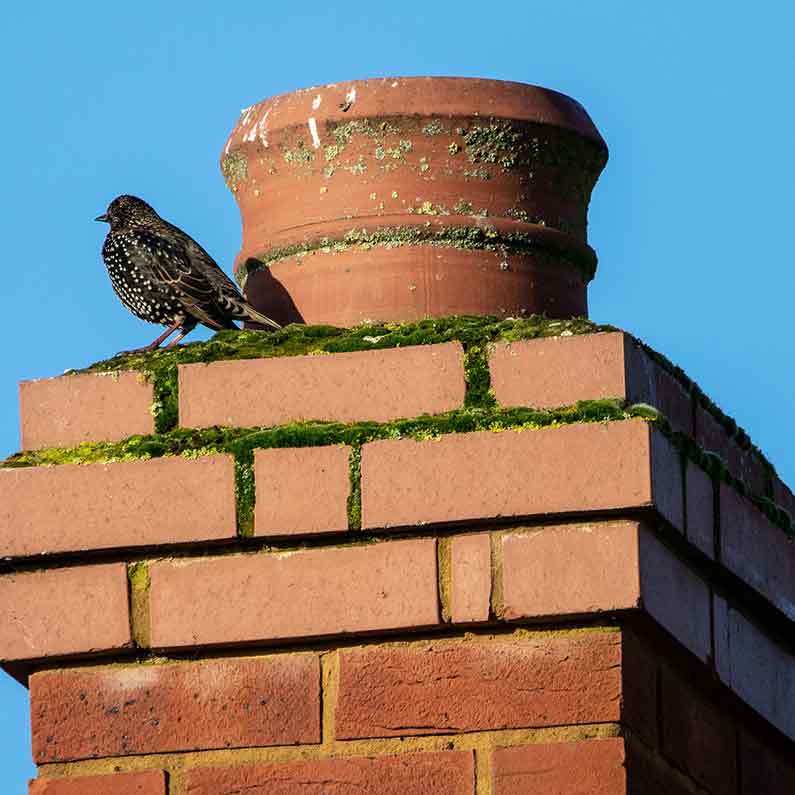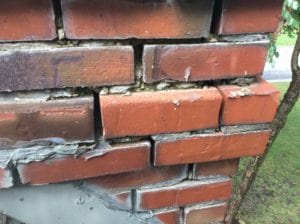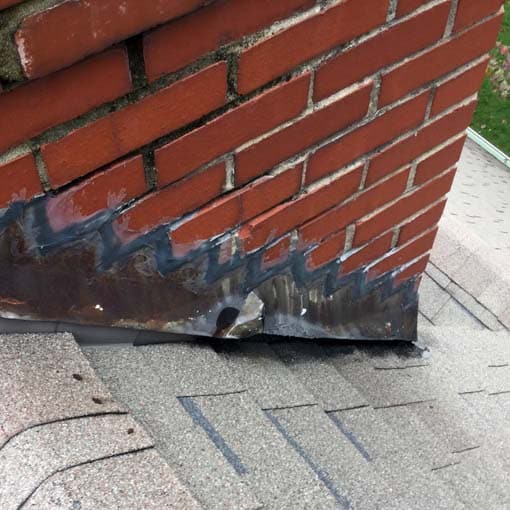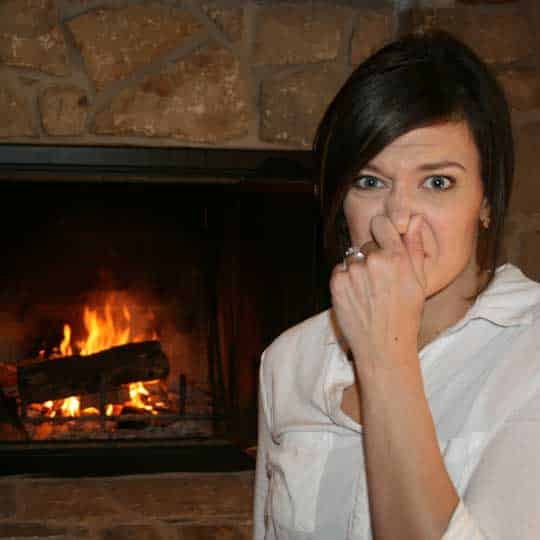Common Chimney Problems
After attempting to do some basic troubleshooting, people often discover they have one of these common chimney problems:

Animals
Many types of pests and animals find ways to make your chimney home. If they can find a way in, then they’ll often get stuck inside the chimney flue. Raccoons are one of many wild animals that LOVE Chimneys, but stay away for your own safety! They may look cute to some but these critters can come with a nasty case of rabies or other viral infectious diseases!
Any pest or creature can crawl into your venting systems but some are more common that others in our local midwestern area.
Types of animals we see most often get stuck in chimneys:
- Bats
- Birds
- Cats
- Raccoons
- Squirrels
Learn more about our Animal Prevention Services.
Chimney Flue Birds
Birds are among the most common things we find stuck in chimneys. A birds nest is made of straw, grass, twigs and is kindling against an extremely hot exhaust. Anyone that knows how to start a fire understands that “kindling” quite literally helps starts fires! So you can imagine how dangerous it is to burn wood in your fireplace not knowing you have a family of birds living inside!
Will Birds Fly Away if You Light a Fire? Contrary to popular belief, NO, birds will not fly away if you start a fire in your fireplace. Never use your fireplace if there’s reason to think birds are nesting in your chimney. Read more about it in our post on other Chimney Sweep Bird issues.
WARNING: If you use a fireplace with a birds nest or debris blockage inside the chimney, there can be devastating consequences. Such as house fires or carbon monoxide poisoning from smoke being pushed back into the home.
Find out how to Prevent Birds from Nesting in Your Chimney.


Bad Masonry
Masonry chimneys do not have a lifetime warranty. Mortar will erode and dissipate over time. Bricks and stones will deteriorate without proper protection from the elements. System neglect, as well as trauma, can lead to water leaks, draft problems and even unwanted fires.
Problems can include:
- Loose bricks or stones on exterior chimney
- Flaking or spalling of facing of bricks or stones
- Eroded or missing mortar joints on the exterior of the chimney
- Cracked or broken crowns
- Loose firebrick in the fireplace
- Eroded mortar joints in the fireplace
Learn more about our Masonry Repairs & Tuckpointing Services
Chimney Leaks
- Cracks in the crown – The crown should be sealed or replaced to prevent water leakage.
- Deteriorated masonry – Gaps or cracks in the masonry or mortar may cause water to enter the flue. Masonry repairs or a vapor-permeable brick sealant can be partial remedies to water leakage problems.
- Deteriorated flashing – Flashing should be repaired or replaced in this instance.
Learn about Chimney Leaks Repair and Water Condensation and how we can help stop the leak before it causes major damage! We also offer Chimney Waterproofing Services.

Flashing that needs replacemnt causes leaking and water damage in your home

Why does my chimney stink?
Chimney Odors
Is your fireplace chimney draft problem the common cause for stinky odors in your home? Check out the other fireplace issues that can cause your home to smell like a campfire.
Water could be getting into your flue. Wet creosote is much more pungent than dry creosote. Much like a wet ashtray is much smellier than a dry one.
Some things you can do to stop fireplace odors:
- When not in use, make sure the damper is shut after the ash in the fireplace gets cold.
- Get a cap to prevent rainwater and snow from entering the flue as moisture increases odor.
- Burning poor quality wood can cause odor.
- A strong odor that is not a smokey-type odor may be the result of a dead animal in your flue, get an inspection to find solutions!
Chimney Smoking Problems
- Make sure the fireplace damper is open before starting a fire. Non-functional or stuck dampers can be the cause of smoking problems.
- A cold flue may have to be “preheated”. This can be accomplished by priming the flue with a rolled-up newspaper. Light one end, hold it way up in the damper opening. Let it burn down aways and drop it on the logs to finish burning. This may need to be done twice. As the draft reverses, the warm flue gases will begin to move up the flue. Some basement fireplaces won’t respond to preheating.
- Sometimes smoking problems are the result of blockages in the flue. Not only blockages, but a heavy build-up of soot can affect the way your chimney performs. That is why it is best to have your chimney inspected and cleaned prior to use.
- If your fireplace burns fine as long as there is a strong fire going but smokes up the room as the fire begins to dissipate, there may be a design problem.
- Glass doors may be a solution for a minor smoking problem when the fire burns low. Close the doors to keep the smoke from entering the house. Keep in mind, though, that the fireplace doors must be a proper fit and type for the type of fireplace you have in your home.
- Other smoking problems can result from improper chimney height, an over-sized or under-sized flue, or house pressure.
- Constant smoking problems can be the result of a smoke chamber that is too small, a flue that is too small, or a fireplace opening that is too large. If your fireplace smokes on windy days, it can be the result of a chimney being too short. If the chimney is not tall enough, a pressure zone created by wind will engulf the chimney top, forcing wind-driven smoke down the flue and into the house.
- If it is a damp or rainy day, keep in mind that wet chimney flues are much harder to heat than dry chimney flues. It takes an enormous amount of heat to convert water to steam. The water absorbs so much heat that the flue doesn’t warm up effectively. The cold air wants to sink, drawing smoke into the house. A cap will divert rain that would normally enter the flue.
- Similarly, if you are burning green or wet wood, it makes more smoke than heat.
- Smoke entering the room from an adjacent fireplace is a common problem often caused by recirculation. Smoke goes up the active flue and is pulled down by the cold flue. This problem is often remedied by installing a top-sealing damper cap on the lower fireplace. Make sure the damper of the unused, adjacent fireplace is shut. That will often prevent smoke from being drawn into that room. However, if there are gaps or cracks between the two flues, or no wythe (separator between masonry flues) is present, then the chimney may need to be relined. See relining chimneys section for more details.
